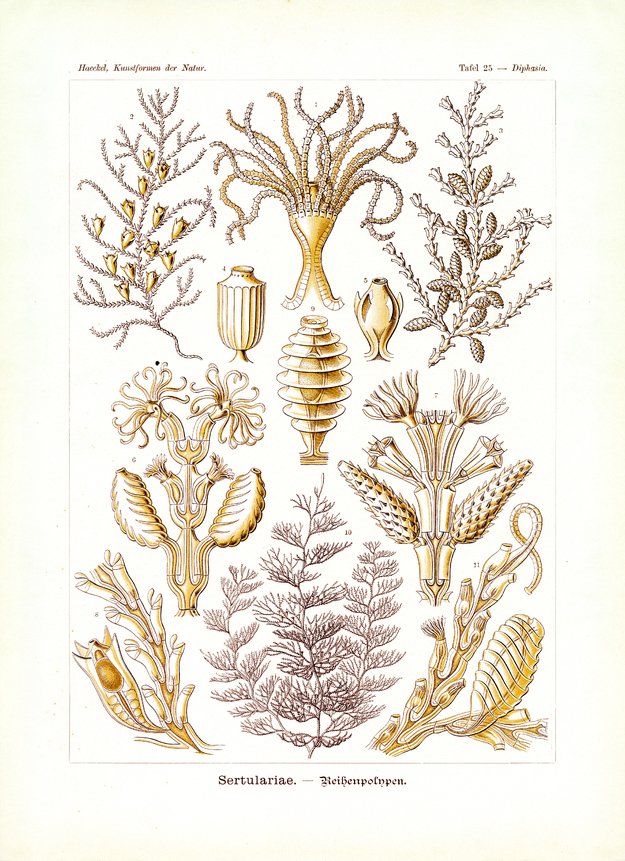Translation of the original German introduction by Ernst Haeckel:
Phylum of Cnidaria (Nesseltiere); - class of Hydrozoa (Hydratiere); - subclass of Hydroidea (Hydropolypen); - order of Sertulariae (Reihenpolypen).
Sertulariae belong to the group of Hydrozoa which never develop into swimming Medusae but always remain in their original form of fixed polyps. Corma or colonies of this order always branch off in a prolific way and are composed of numerous small individuals or individual polyps. They usually occur in two different forms arising out of labour division, as feeding ‘nurturing animals‘ (Hydranthae) and as reproducing ‘sexual animals’ (Gonophorae). Hydranths or ‘feeding polyps’ (fig. 1) carry a simple corona of flexible tentacles or ‘capturing threats’ that are used for sensing as well as capturing prey, armored with ‘nettle capsules’; their simple stomach cavity opens with the help of a mouth at the top of a conically shaped snout. Gonophorae or ‘sexual polyps’ (fig. 9) on the other hand neither have tentacles nor a mouth; they develop ‘sexual cells’ required for reproduction in the wall of the closed stomach pit; females produce eggs, the male ones sperms. Nutrition is common for the whole colony since the stomach cavities of all individuals communicate with the help of hollow tubes (fig. 6-8, 11). The tender bodies of the polyps are embedded in protecting horny capsules into which they can retreat (fig. 6 and 11). The tube-shaped protecting capsules of the ‘feeding polyps’ (Hydrothekae) are usually placed at the two-lined branches of the colony in two rows opposite to each other (fig. 2, 3, 8 and 11). The bigger protecting capsules of the ‘sexual polyps’ (Gonagiae) stand in between, distributed singularly (fig. 2 and 11) or in pairs (fig. 3, 6 and 7); their delicate shape resembles a casket (fig. 4, 5 and 9).
Translation by VR Translators Bangalore
We've scanned the original lithography at 1200dpi on the Epson A3 scanner of A3 scanner huren. You can download a 400dpi JPEG here.
